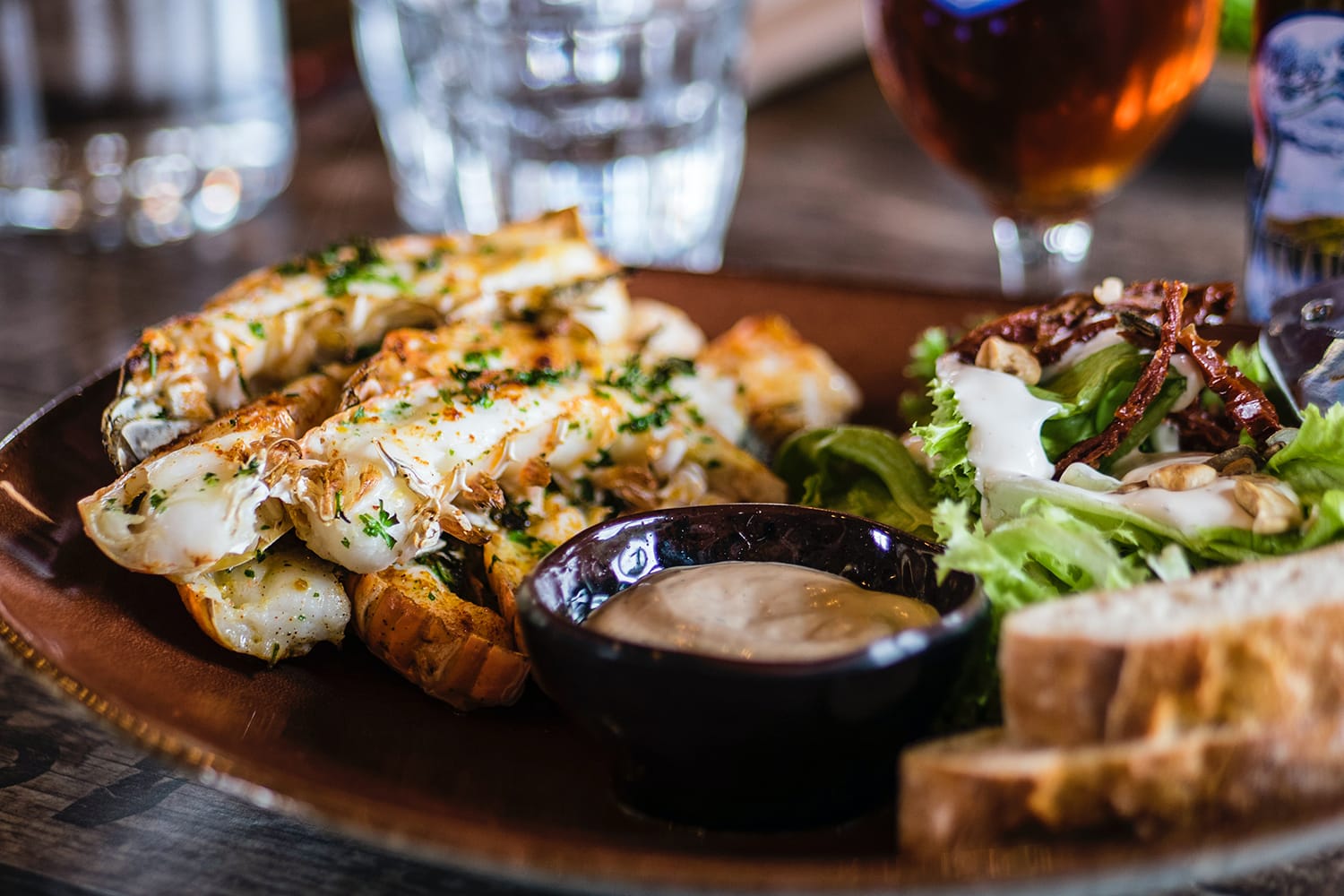Tips for Capturing Mouthwatering Food Shots
Food photography is a visual symphony, a language that speaks directly to our stomachs. The goal? To transform a plate of everyday food into a mouthwatering masterpiece, an image that ignites cravings and has viewers reaching for their phones to order takeout (or race to the kitchen!). So, aspiring food photographers, sharpen your knives (figuratively, of course) and get ready to unlock the secrets of capturing truly delicious-looking dishes!

Light Up Your Dish: Natural Light is Your Best Friend
Natural light is the magic ingredient in food photography. The soft, diffused light of a window on an overcast day bathes your food in a natural glow, making it appear fresh and inviting. Experiment with different angles – sidelighting sculpts form and highlights texture, while front lighting emphasizes vibrant colors. If natural light is limited, bounce flashes or artificial lighting setups can be used to mimic natural light and avoid harsh shadows. Remember, harsh light creates unappetizing shadows, so banish those overhead kitchen lights!
Composition is King: Arrange a Feast for the Eyes
Once you’ve mastered lighting, it’s time to consider composition. The way you arrange your food on the plate is just as important as the food itself. The rule of thirds is a handy guide – imagine dividing your frame into thirds horizontally and vertically, and place your food at one of the intersecting points. This creates a visually balanced image that’s pleasing to the eye. Negative space, the empty areas around the food, can also be your friend. Use it to draw attention to your culinary masterpiece without overwhelming the viewer.
Style it Up: Add Personality to the Plate
Food styling is the art of transforming an ordinary dish into a visual feast. Fresh herbs strategically placed, colorful spices sprinkled around the edges, or props like cutlery and napkins – these seemingly minor details add depth, context, and personality to your photos. Consider using a variety of textures to create visual interest – smooth sauces juxtaposed with crunchy toppings and fresh ingredients bursting with life. Don’t be afraid to experiment with different backdrops and surfaces – a rustic wooden table for a hearty stew, or a sleek marble countertop for a modern dessert.
Close-Up Magic: Unveiling the Delicious Details
Close-up shots are your weapon of choice for showcasing the mouthwatering details of your dish. Zoom in and capture the glistening droplets of sauce clinging to pasta, the perfectly browned crust of bread, or the dewdrops on a plump berry. A shallow depth of field is your secret weapon here – by blurring the background, you draw the viewer’s eye directly to the most delicious part of the plate. Imagine them practically tasting the food through the screen!
Capture the Action: Food is Fun, Not Static!
Food photography isn’t just about capturing still life. Adding a touch of movement and dynamism can make your photos even more engaging. Try capturing action shots, like pouring a sauce over pasta or sprinkling spices over a sizzling dish. A faster shutter speed will freeze the motion, creating a sense of anticipation and making the viewer want to dive right in.
Editing Enhances, Not Transforms: The Finishing Touch
Post-processing can be the cherry on top of your delicious photo sundae. Basic adjustments like tweaking the exposure, white balance, and contrast can make a world of difference. Cropping your image can help refine the composition, and using selective adjustments allows you to enhance specific areas of the photo. However, remember, editing is about enhancing the natural beauty of your food, not creating a completely unrealistic image. Avoid excessive filters and edits that make the food look artificial – after all, we want to celebrate real, delicious food!
Find Your Visual Voice: Inspiration is Everywhere
There’s a world of food photography inspiration waiting to be discovered. Browse through cookbooks, food blogs, and social media platforms like Instagram and Pinterest. Pay attention to the lighting setups, composition styles, and color palettes used by other food photographers. Don’t be afraid to experiment and find a visual style that reflects your own personality and brand. Are you all about clean lines and minimalist elegance? Or do you favor a rustic and vintage aesthetic? Find your voice and let it shine through in your photos.
Practice Makes Perfect: The Delicious Journey Begins
Food photography is a journey of continuous learning and exploration. Don’t be discouraged if your first attempts don’t look like they belong on the cover of a gourmet magazine. The key is to experiment with different techniques, practice regularly, and most importantly, have fun! The more you enjoy the process, the more your passion will translate into captivating and mouthwatering food photography. So, grab your camera, gather your favorite ingredients, and embark on this